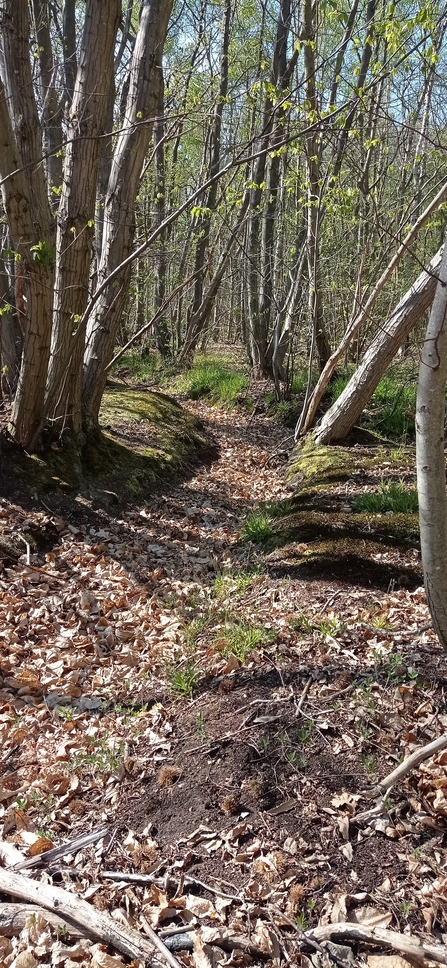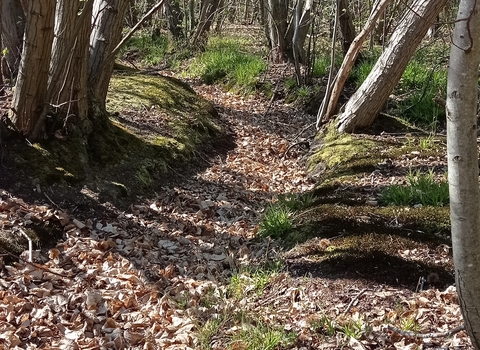I volunteered for this role towards the end of last year. Its purpose is to survey the entire area that the Bison, cattle, ponies and pigs will be occupying this year in Thornden and West Blean woods. We were looking for several invasive plant species as a baseline survey before the livestock go in, and then in subsequent years gather data to see whether they have had any impact on these species. Ranging from small plants such as Lesser Periwinkle up to goliaths like Rhododendron.
My thoughts were, it'll be nice to do something connected with the Wilder Blean project and what's not to like about spending hours out in the woods. The method consisted of wandering around a series of 50x50m squares using an excellent app that shows exactly where you are, recording what you see or don’t see and so on until the end. I had about 108 squares to do plus a 1 hour round trip by car. It was surprisingly tiring as I wasn’t on paths but pushing through bracken and brambles and ditches and mud and bogs and under fallen trees. But, the sense of isolation made it all worthwhile, the only sounds being the breeze in the trees and birds calling.
On one visit I flushed seven separate Woodcock, almost standing on some as they wait until the last second before flying off. A flock of returning Redwing was a nice sight as was the regular sound of Lesser Spotted Woodpecker and then later, singing Willow Warblers.
I noticed early on a lot of old ditches and old coppice. After some research I learnt about the industries that existed there, one of the main ones being tile making which is where the name Tyler Hill comes from, this industry dates back to Roman times. Also, brick making and a lot of coppicing for the furniture and tool industries and production of charcoal for Iron smelting. The ditches are old plot markers for different businesses.
In some places, old saw pits are visible which were used for the production of long planks. The person in the pit being showered with sawdust giving us the phrase underdog as someone at a disadvantage. Some old boundary sites predate the secondary forestation which took place as farming declined and are mediaeval field boundaries with evidence of the old laid hedges still visible.
On top of this, I learnt some new plant species which I don’t see on the Downs such as Greater Wood Rush and saw the fascinating Red Wood Ant colonies coming to life in spring. I only found one clump of Rhododendron but enjoyed about 11 hours in the woods and felt that I’d got to know the place a bit better and appreciated how vast the whole Blean complex is.
If you would like to take part in this volunteer role this year we are looking for more surveyors. To find out more click below

